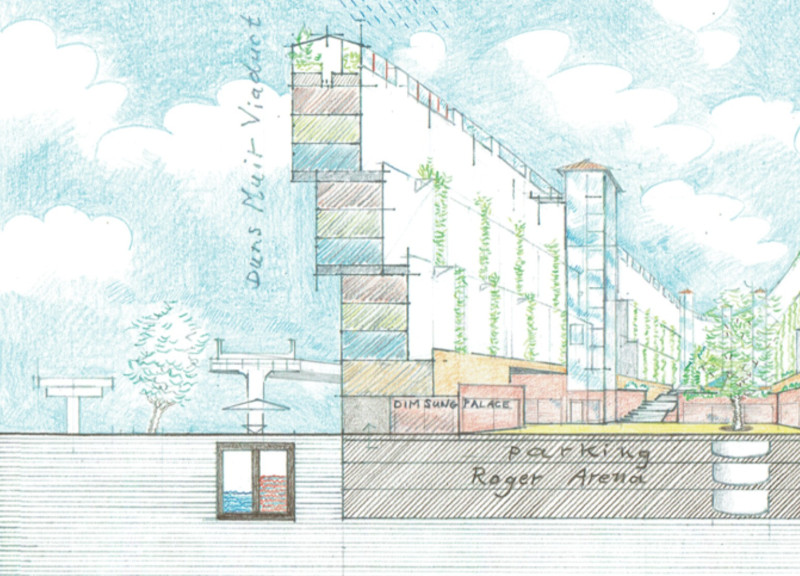5 key facts about this project
This structure serves as a [describe the function of the building, e.g., community center, residential complex, commercial space], designed to foster engagement among its occupants and the larger community. The organization of the spaces reflects a thoughtful consideration of how people inhabit and interact within the building. Public areas are accessible and inviting, encouraging gatherings and communal activities, while private spaces provide comfort and privacy for individuals. The layout effectively blurs the lines between inside and outside, creating an environment conducive to both social interactions and personal retreat.
The architectural design employs a variety of materials that contribute to both its visual appeal and functional performance. Concrete forms the primary structural element, providing durability and thermal mass. This choice underscores a commitment to lasting quality while ensuring the building can withstand various environmental conditions. The integration of glass not only enhances the transparency of the design but also fosters a connection to the exterior landscape, allowing natural light to permeate the interiors. Strategically placed windows and translucent walls invite the outside in, creating a sense of openness that is often sought after in modern architecture. Wooden accents introduce warmth and texture, complementing the cooler concrete surfaces and the sleek glass features.
An important aspect of this project is its dedication to sustainability. The design incorporates passive solar strategies, such as overhangs and shading devices, which reduce reliance on artificial heating and cooling systems. Additionally, the selection of materials reflects an awareness of the environmental impact of construction; many components are sourced locally or consist of recycled materials. This conscientious design approach not only reduces the carbon footprint of the building but also promotes a sense of responsibility towards the environment among its users.
In terms of unique design approaches, the project stands out for its innovative use of space and light. The architects have employed a modular design that allows for adaptability and flexibility across various functions and activities. This versatility ensures that the building can cater to diverse user needs, accommodating everything from large gatherings to quiet study areas. Furthermore, the incorporation of green spaces—such as vertical gardens or rooftop terraces—reinforces the connection to nature, enhancing the overall well-being of those who inhabit the space.
The integration of technology into the design is another noteworthy element. Smart building systems control heating, lighting, and security, thereby optimizing energy usage while providing a higher degree of comfort for occupants. This forward-thinking incorporation of technology illustrates a broader trend in contemporary architecture: the desire to create spaces that not only serve immediate needs but also anticipate future requirements.
The architectural presentation offers a comprehensive view of this thoughtfully engineered project. By examining elements such as architectural plans, architectural sections, architectural designs, and architectural ideas, one can gain deeper insights into the intentions behind each aspect of the project. This exploration highlights the careful deliberation in crafting a building that stands as both a functional space and a work of art.
For those interested in delving further into the details of this architectural project, an examination of the various design aspects offers an enriched understanding of how contemporary architecture can effectively merge form and function, welcoming both users and nature into a cohesive living environment.























